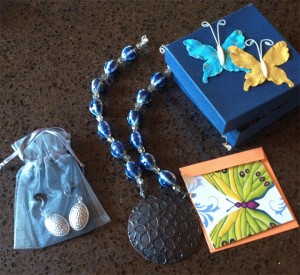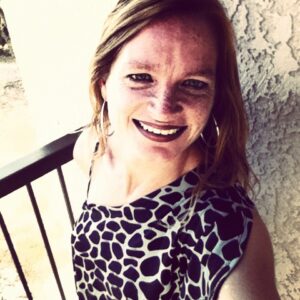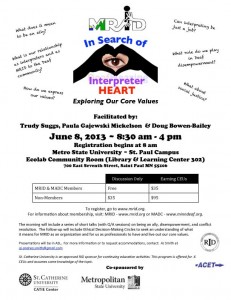In Search of Interpreter Heart
(co-presented with Doug Bowen-Bailey and Paula Gajewski-Mickelson)
Minnesota Registry of Interpreters for the Deaf, St. Paul, MN
Trudy’s thoughts:
This was a last-minute request that turned out wonderfully, especially with us co-presenting together for the first time. With nearly 40 people in attendance at the MRID spring conference, Doug, Paula and I were thrilled with the overall atmosphere, participants’ open minds and everybody’s honest exploration of different topics within the Deaf and interpreter communities. What I especially liked was the opportunity to interact with participants and listening to their experiences and perspectives. One of the best parts for me was when we went into the ethical decision-making circles, which consisted of anywhere from five to ten people per circle. The first thing Paula had us do was write down our top three values–not work values, but overall values in our professional and personal lives. We had to then choose the top one out of our list. It was harder than I anticipated, because I had so many that I couldn’t figure out which ones to choose. We then shared our top value with each other, and that provided me with such a major insight into each circle participant’s perspectives and even life experiences. That was a great activity.
We three are already refining our presentation and are eager to present this again. I was, and am, honored to work with Doug and Paula especially because they are two of the most sincere, committed and fun allies I know.
Evaluation comments:
Thank you! One of the best workshops I’ve ever been to! Please offer it again for those who missed it today.
Great workshop! The presenters were wonderful, knowledgeable, and professional. Thank you!


